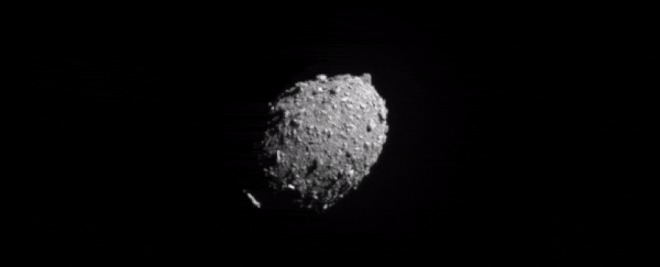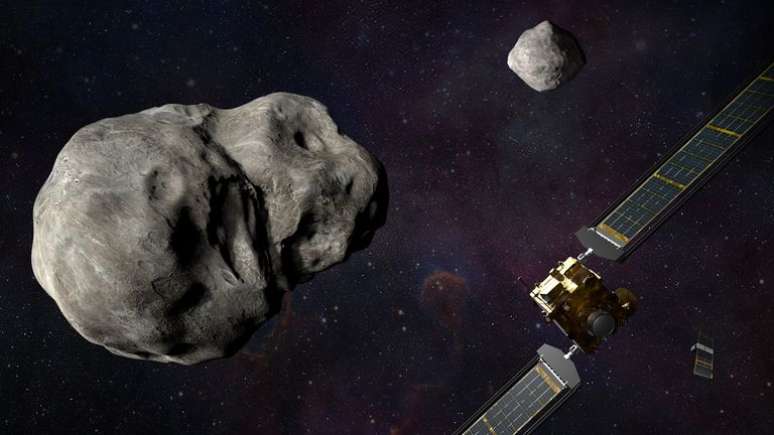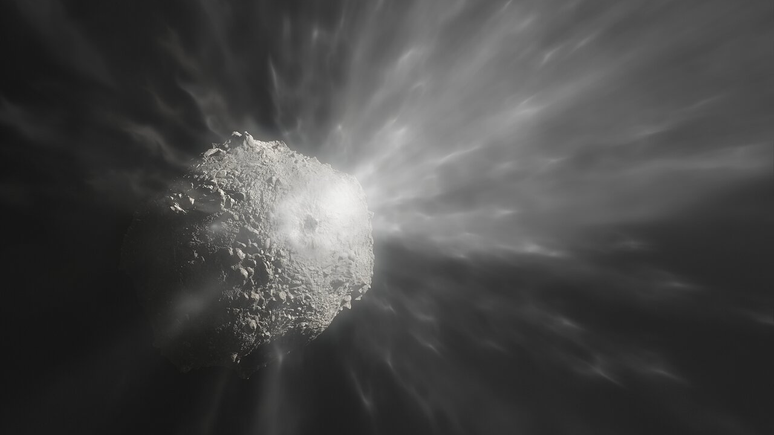Observations of the asteroid Dimorphos showed that it took 34 minutes to orbit Didymos, not 33, as measured shortly after the impact of the DART spacecraft.
The asteroid Dimorphos surprised researchers. The space rock was hit last year by NASA’s Double Asteroid Redirection Test (DART) probe. NASAand the impact shortened its orbital period, but now new observations indicate that Dimorphos’ orbit has changed more than expected.
- Asteroid Didymos and Dimorphos | What are the objectives of the DART mission?
- DART’s Next Steps: What Happens After the Asteroid Impact?
Dimorphos orbits the asteroid Didymos, and you can be sure that neither is on a collision course with Earth. They were chosen by NASA to test a planetary defense technique that has brought good results: the impact of DART it altered Dimorphos’ orbital period, shortening it by about 33 minutes.
The collision occurred in September, and in the following months Professor Jonathan Swift took his students to an observatory in California to study the asteroid. They got a surprise: Dimorphos’ orbit around Didymos continued to narrow for about a month after the collision.

Swift says they recorded an orbital period of 34 minutes, different from the 33 minutes previously measured. This difference suggests that, although DART caused only one impact, some other force continued to slow the asteroid’s orbit. However, this mechanism is a mystery.
One possibility is that, previously, Didymos’ gravity caused so-called tidal locking on Dimorphos; this would have changed after the impact, which may have caused it to overturn. “This could cause tidal forces to change the orbital period,” Swift suggested.
Harrison Agrusa, a member of the DART team, noted that there is evidence of such an overturn and that Dimorphos showed significant hovering after impact. This means that the asteroid is wobbling in its position relative to Didymos, something like that what happens to the Moon as it orbits the Earth.

For Agrusa it is possible that inertia causes the libration to evolve into a rounding movement. However, it is unlikely that this was the cause of the orbital period of Dimorphos observed by Swift and his students: if this were the case, the variations would be expected to occur randomly.
Therefore, it is more likely that material released by the impact (such as rocks a few meters long) remained in orbit around Dimorphos and then fell to its surface, further decreasing the orbit. “I think this is the most likely explanation,” Agrusa added.
Mission team member Nancy Chabot pointed out that Dimorphos observations indicated that the orbital period continued to decrease and stabilize, perhaps indicating that material returned to the planet’s surface. asteroid. “We didn’t see any changes after the first month,” she reported. They will soon publish the results obtained.
The article with the results of the study has been published in the repository arXivwithout peer review.
Source: arXiv; Through: NewScientist, Universe today
Trends on Canaltech:
- Big Bang fossil found near the Milky Way
- What is the price of the iPhone 15 in the world?
- WhatsApp channels arrive in Brazil
- Brazil x Peru | How to watch the Seleção play in the World Cup qualifiers?
- iPhone prices DROP in Magalu with the launch of the iPhone 15
- Thinkplus X3 Pro review | Bone conduction headphones
Source: Terra
Rose James is a Gossipify movie and series reviewer known for her in-depth analysis and unique perspective on the latest releases. With a background in film studies, she provides engaging and informative reviews, and keeps readers up to date with industry trends and emerging talents.







